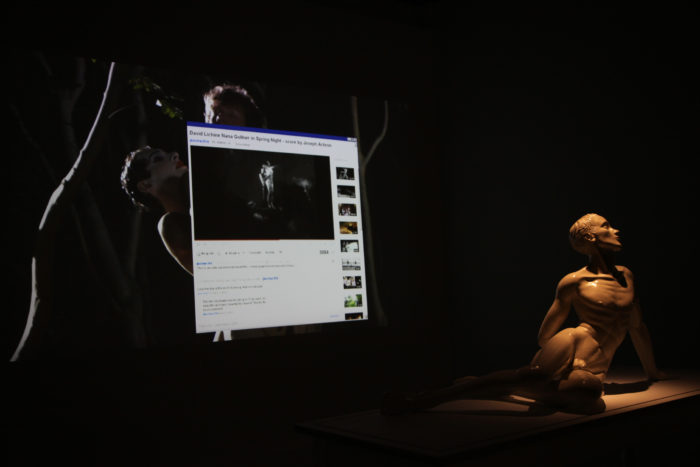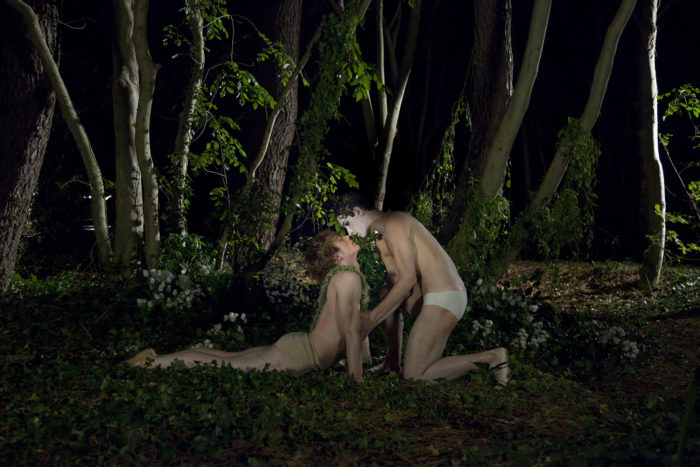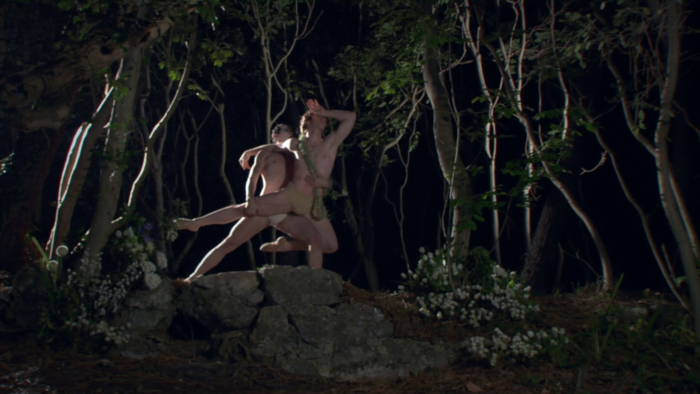With an effeminate gesture, view of the installation in Ecat. Toledo

With an effeminate gesture, view of the installation in Ecat. Toledo

With an effeminate gesture, view of the installation in the exhibition Our desire is a revolution, Nuestro deseo es una revolución. 2017 CentroCentro. Madrid

With an effeminate gesture, view of the installation in Guggenheim Bilbao Museum, 2014

With an effeminate gesture, production photography, 2011

With an effeminate gesture, production photography, 2011

With an effeminate gesture, production photography, 2011

With an effeminate gesture, production photography, 2011

With an effeminate gesture, production photography, 2011

With an effeminate gesture, production photography, 2011

With an effeminate gesture, HD-Video still

With an effeminate gesture, HD-Video still

With an effeminate gesture, HD-Video still

With an effeminate gesture, HD-Video still

With an effeminate gesture, HD-Video still

With an effeminate gesture, HD-Video still

With an effeminate gesture, HD-Video still

With an effeminate gesture, HD-Video still

With an effeminate gesture, HD-Video still

With an effeminate gesture, HD-Video still

With an effeminate gesture, HD-Video still

With an effeminate gesture, HD-Video still

With an effeminate gesture. 2011
Installation of HD-Video projection, 10.15 min. (loop), and sculpture in metal, wood, high-density polystyrene, epoxy and paint, variable measures
With an effeminate gesture is the title that Manu Arregui has given his latest work, an installation consisting of a video montage and a sculptural piece.
The ballet film Spring Night, 1935 has provided the artist with rich material to load with new political attributes, taking up the concepts of class and gender that the original footage addresses. His research mainly covers the notion of masculinity, developed around the body in motion, using the effeminate choreography of The Russian Ballets. Arregui overlaps and interrupts the linear reproduction of his film with a chat window, revealing details of the production, thus exposing the artificiality inherent in any representational process and contextualizing its creation in the technological field of the present.
Spring Night was directed by Tatiana Tuttle and choreographed and danced by David Lichine. Its creative origins go back to Sergei Diaghilev’s sphere of influence. It tells the story of a maid who finds a statue in the forest. When she falls asleep, the figure comes to life. In her work, Manu Arregui has inverted the sex of the protagonist, exposing the homosexual subtext of the analyzed film. This narrative has served him to address issues such as the imbalance of the individual against society and his sexist imperatives of heteronormative masculinity, the political movements linked to the liberation of minorities, the reflection on the body and the challenge to normality that has come trying throughout his career.
Arregui’s determination is to question the hegemonic audiovisual models and narratives and the expansion of the possibilities of the medium to record, interrogate and enhance forms provided with other ethical values. In this way, he offers a critique of machismo and misogyny, using the language of the entertainment industry, recontextualizing and reinterpreting elements of popular culture.
In an analysis of Hollywood films in their construction of a filmic language, it is obvious to appreciate that it is a sexist language, it is an exclusion cinema that the artist has tried to subvert in several of his works developing a deceptively commercial aesthetic behind which underlie critical elements, as well as claims for the rights of the homosexual and female collective. As an example, some of the works introduce references to musical productions such as Choreography for 5 transvestites, 2001 or A lyrical impulse, 2007. With an effeminate gesture, 2011 represents an evolutionary step in his ability to combine the musical genre with resources of avant-garde cinema.